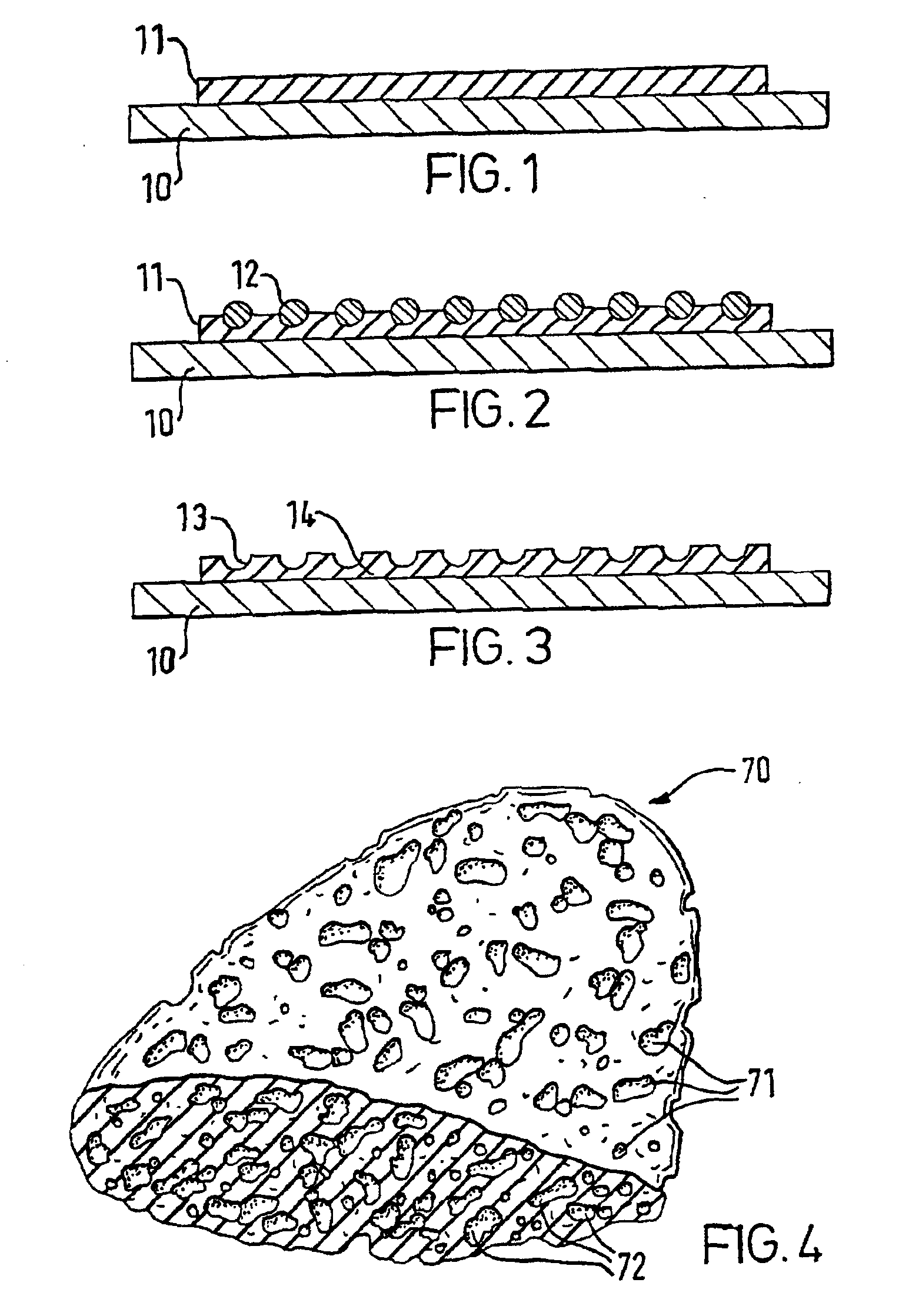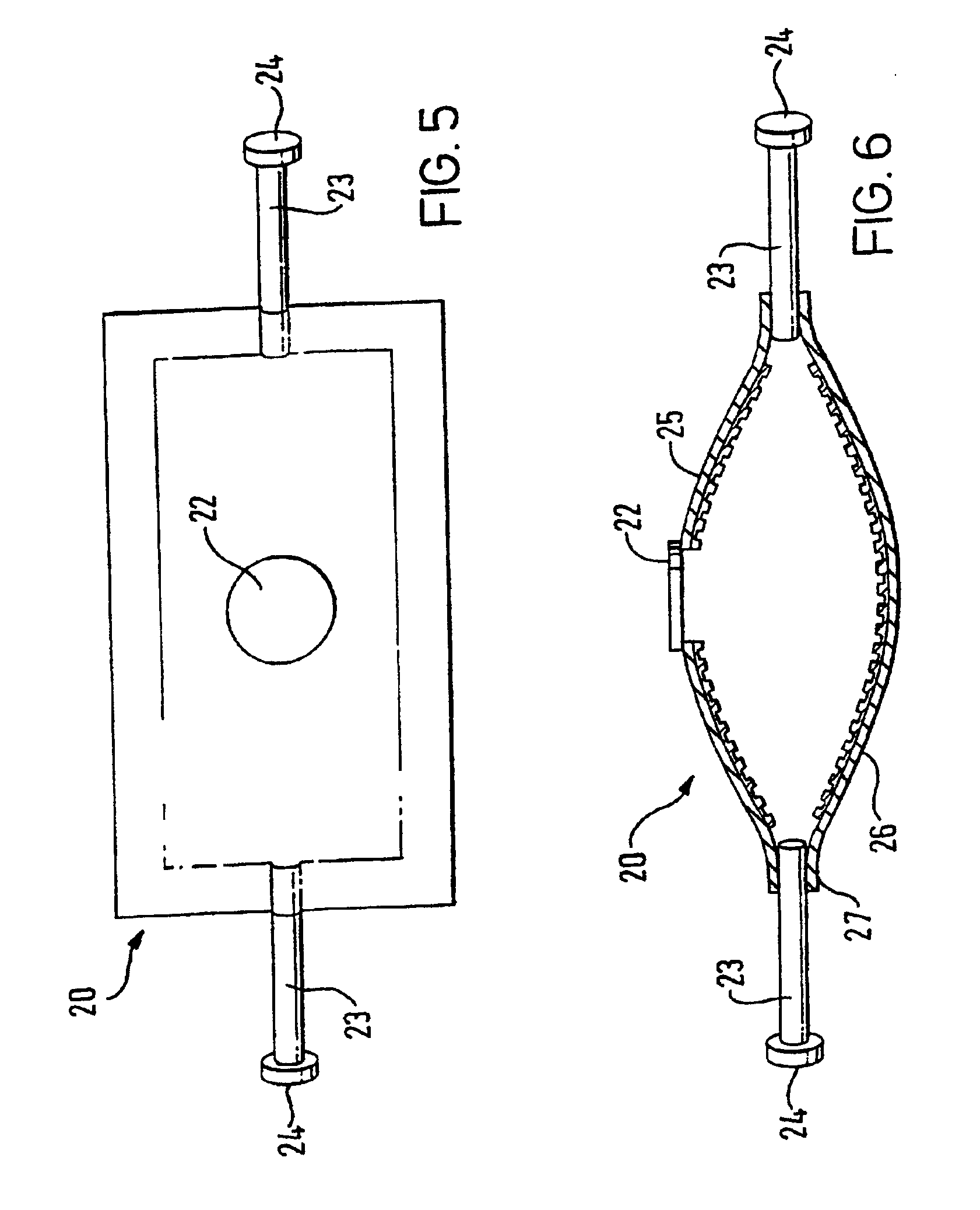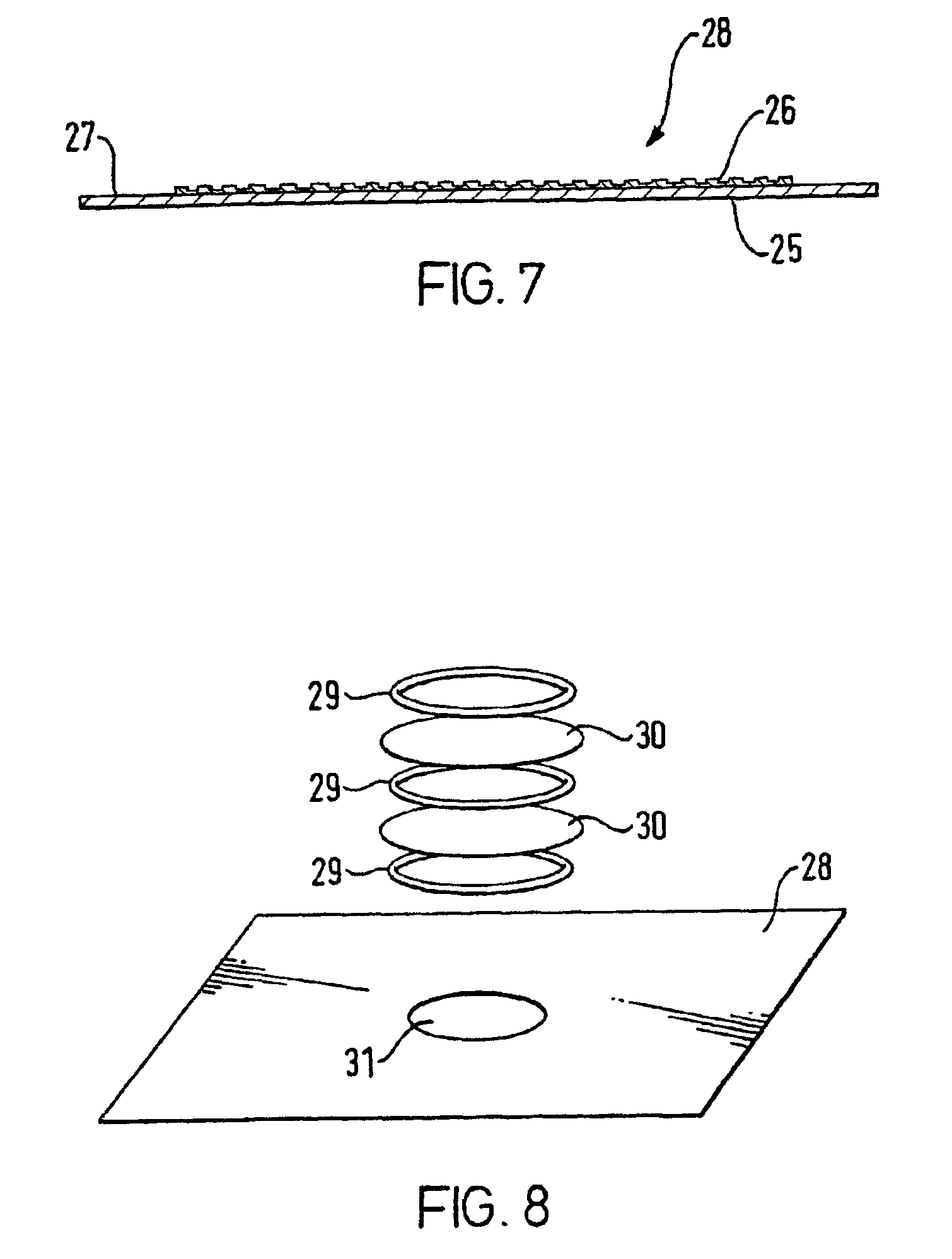Preparation of porous silicone rubber for growing cells or living tissue
- Summary
- Abstract
- Description
- Claims
- Application Information
AI Technical Summary
Benefits of technology
Problems solved by technology
Method used
Image
Examples
Embodiment Construction
[0038]FIGS. 1, 2 and 3 show successive steps of the manufacturing process in accordance with the second aspect of the invention. In FIG. 1, the surface of a substrate 10 is coated with a layer of uncured silicone rubber precursor 11. In FIG. 2, a sacrificial filler 12, such as sodium chloride, is applied to the silicone rubber layer 11 whilst the latter is still tacky, the sodium chloride 12 becoming adhered to and partially embedded in the silicone rubber layer. Any excess sodium chloride 12 that is not adhered to the silicone rubber layer 11 is removed and the silicone rubber layer 12 is allowed to cure. Once the silicone rubber layer 11 has been cured, the sodium chloride 12 is dissolved in a solvent, such as water, leaving craters or micro-cupules 13 forming a textured surface structure 14 as shown in FIG. 3.
[0039]In FIG. 4, a porous silicone rubber article 70 has a textured exterior surface with craters 71 and pores 72 within the body of the silicone rubber article 70, forming ...
PUM
| Property | Measurement | Unit |
|---|---|---|
| Temperature | aaaaa | aaaaa |
| Diameter | aaaaa | aaaaa |
| Particle size | aaaaa | aaaaa |
Abstract
Description
Claims
Application Information
 Login to View More
Login to View More - R&D
- Intellectual Property
- Life Sciences
- Materials
- Tech Scout
- Unparalleled Data Quality
- Higher Quality Content
- 60% Fewer Hallucinations
Browse by: Latest US Patents, China's latest patents, Technical Efficacy Thesaurus, Application Domain, Technology Topic, Popular Technical Reports.
© 2025 PatSnap. All rights reserved.Legal|Privacy policy|Modern Slavery Act Transparency Statement|Sitemap|About US| Contact US: help@patsnap.com



